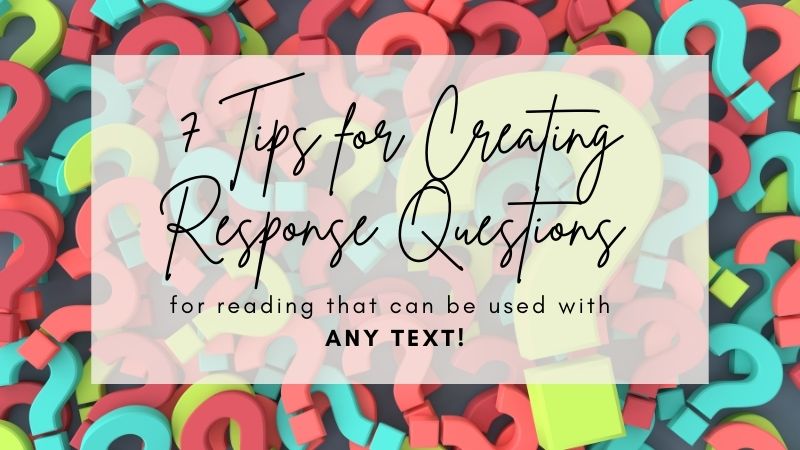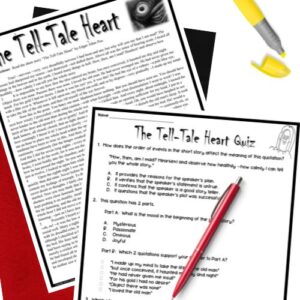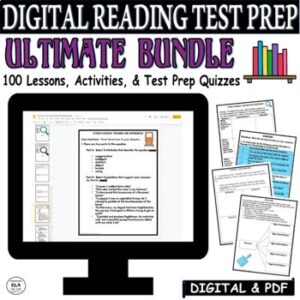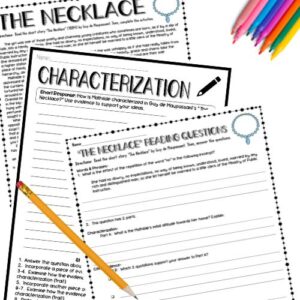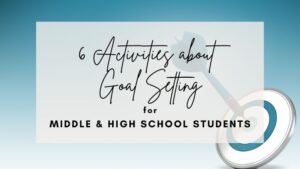Creating effective, standards-based response questions for reading takes a BUNCH of time! However, they are SUPER necessary for helping your students prepare for reading-based standardized tests. It is really tough to go through test prep season without go-to response questions for reading comprehension that actually MIRROR what students will encounter on state tests!
Instead of struggling every spring, why not incorporate test prep reading questions throughout your entire year?
Keep reading for 7 EASY tips you can use when creating your own questions!
Need help with Test Prep? Check out this FREE Pack of 3 Test Prep Activities to help students achieve success on standardized tests!
7 Tips for Creating Response Questions for Reading
1. Always focus on the standards when using response questions for reading.
Every state has similar standards, even though they might look a bit different. When it comes down to it, most center on the following for fiction/nonfiction passages:
- Citing Evidence
- Central Idea
- Words & Phrases
- Structure/Organization
- Point of View Perspective
- Characterization
- Author’s Purpose
If you are teaching a lesson using “The Tell-Tale Heart,” you might want to focus on the main idea and details. Here is an example from a test prep quiz in my store!
This question has 2 parts. Part A: What is the central idea of the short story? Part B: Which 2 quotations support the answer to Part A?
Every time your students read, they can focus on 1 or more of the standards. By integrating the standards into everything you teach, you can prepare your students for every testing situation! You won’t have to feel the crunch of test prep time!
Click HERE for The Tell-Tale Heart Quiz that uses the Common Core CCSS standards and contains 20 QUESTIONS and ANSWERS (modeled after various state exams) for this classic story!
2. Use response questions for reading that mirror your state’s test.
Most parts of the country have tests that require some form of higher-level questioning. Rarely will you see basic “right there” questions. More often, students will see response questions for reading that require them to go back to the text, reread, and interpret the meaning.
NOT TYPICAL QUESTIONS:
- Who is the main character?
- What is the topic of the text?
- Where is the setting of the passage?
- What type of figurative language is used….?
TYPICAL QUESTIONS:
- How does the character change from start to finish?
- What is the central idea of the passage?
- How is the description of the setting used in the passage?
- Why does the speaker use a comparison here?
This ultimate bundle includes many options for practicing short and long responses, multiple choice, 2-part questions, and order of events – basically, everything your students need to prepare without you having to do extra prep work!
3. Create answers that reflect what students will see on standardized tests.
This might be the most difficult part. You want answers that are right, could be right, and are most definitely not right. We also want to focus on formatting and realistic, culturally sensitive responses, because test makers consider all of these elements.
CREATING ANSWERS:
- Answers should be similar in terms of sentence structure.
- Answers should be right, sort of right, and not right.
- Answers should be realistic and culturally sensitive.
- Answers should be organized by length.
- Answers should be detailed.
Here is an example 2-part question from “The Necklace!”
This next question has 2 parts based on characterization and citing evidence.
Part A: Which 2 traits exemplify Mathilde?
- Happy
- Careful
- Envious
- Grateful
- Depressed
- Self-centered
Part B: Which 2 quotations support your answers to Part A?
- “She was remarked by the minister himself.”
- “She would have liked so much to please, to be envied, to be charming, to be sought after.”
- “Suddenly she discovered, in a black satin box, a superb diamond necklace, and her heart throbbed with an immoderate desire.”
- “She tried on the ornaments before the mirror, hesitated and could not make up her mind to part with them, to give them back.”
- “Her husband had been sleeping since midnight in a little deserted anteroom with three other gentlemen whose wives were enjoying the ball.”
- “She had a friend, a former schoolmate at the convent, who was rich, and whom she did not like to go to see any more because she felt so sad when she came home.”
Click the image below for a ready-made test prep quiz focused on the standards for the short story “The Necklace!”
4. Provide a section for response questions for reading without any answers.
When working with AP students, it helped so much when students tried to answer the questions before actually providing possible answers first. This process forces students to think and analyze first without the possibility of being persuaded by a wrong answer.
Try including the questions before the quiz first. They could even look like the quiz questions! Using question stems will help the most in this process.
Check out this example from Langston Hughes’ “Thank You, Ma’am!”
Directions: Read “Thank you, M’am” by Langston Hughes. Think about Mrs. Jones and Roger. How are they alike in at least 2 ways? Use evidence to support your ideas.
You could require 1-2 sentences, a paragraph, or 2 paragraphs. It is up to you!
5. Connect your response questions for reading to a variety of texts.
Your students won’t encounter one type of text on the standardized test. They might see a speech, article, narrative, poem, etc. There are tons of options! Make sure to incorporate diverse texts when creating questions.
ELEMENTS TO CONSIDER WHEN CHOOSING PASSAGES:
- Topic
- Diction/Vocabulary
- Sentence Complexity
- Structure
- Background Knowledge
- Length
- Genre
Want to help your students set and achieve their goals? Check out this post about the benefits of goal setting in your English classroom!
6. Make response questions for reading from what you are already reading.
Why reinvent the wheel months before the state test? Instead, use all of the wonderful literature and passages you have already chosen to read for the year!
For example, if your ninth graders are reading Romeo and Juliet, why not use passages from this classic play to help with comprehension? If your tenth graders are reading World Literature, feel free to use excerpts, pages, or entire texts when creating worksheets!
If you are teaching American Literature, why not include some parts of the Declaration of Independence, Edgar Allan Poe’s “The Masque of the Red Death,” or classic poetry?
Every text can be used to help your students master standardized tests!
Want help with teaching poetry in April? Check out “Making the most of National Poetry Month!”
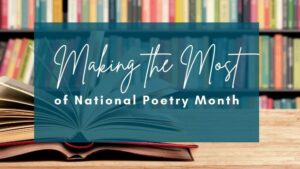
7. Require citing evidence for all response questions for reading.
Unfortunately, we live in a world where people make statements without providing any sort of evidence. As teachers, we want to encourage our students to use support for EVERYTHING.
Guessing is NOT an option!
You can do this in several ways:
- Tell students to explain their ideas.
- Tell students to include a quote or detail.
- Tell students to use multiple pieces of evidence.
- Tell students to mark in the passage where the evidence is.***This technique is my favorite.
If you need any more ideas for sample response questions for reading, check out my FREEBIES with response questions for reading HERE!
Need more help with including more response questions for reading? Check out my store Kristin Menke-Integrated ELA Test Prep!

